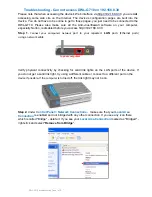
27-20
Cisco ME 3800X and 3600X Switch Software Configuration Guide
OL-23400-01
Chapter 27 Configuring QoS
Understanding QoS
For more information, see the
“Configuring Class-Based-Weighted Fair Queuing” section on
page 27-44
.
Priority Queuing
You can use the priority policy-map class configuration command to ensure that a particular class of
traffic is given preferential treatment with respect to other classes associated with the same parent entity.
With priority queuing, the priority queue is constantly serviced until the queue is empty. With priority
queuing, traffic for the associated class is sent before packets in other queues are sent.
When you configure priority in a class, you cannot configure the bandwidth command in any other
sibling class associated with the same parent.
Note
You should exercise care when using the priority command. Excessive use of strict priority queuing
might cause congestion in other queues.
Priority queuing has these restrictions:
•
You can associate the priority command with a a single unique class for each policy map.
•
You cannot configure priority and any other scheduling action (shape average or bandwidth) in the
same class.
•
You cannot configure priority queuing for the class-default of an output policy map.
For more information, see the
“Configuring Class-Based Priority Queuing” section on page 27-49
.
Input and Output Policy Maps
Policy maps are either input policy maps or output policy maps applied to packets as they enter or leave
the switch by service policies attached to targets. Input policy maps perform policing and marking on
received traffic. Policed packets are dropped or reduced in priority (marked down) if they exceed the
maximum permitted rates. Output policy maps perform scheduling and queuing on traffic as it leaves the
switch.
Input policies and output policies have the same basic structure but differ in the characteristics that they
regulate.
Figure 27-8
shows the relationship of input and output policies.
















































